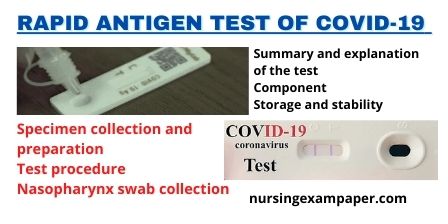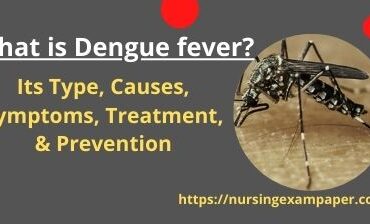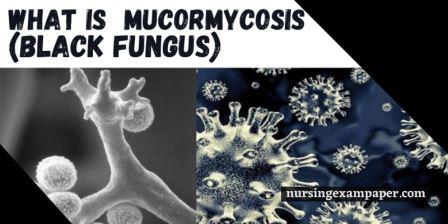INTENDED USE – The Xamin Rapid Antigen Test for COVID-19 Ag, the test is used for the in vitro qualitative detection of antigens of a novel coronavirus in the human nasopharynx.
SUMMARY AND EXPLANATION OF THE COVID-19 TEST
The novel coronaviruses belong to the ß genus. COVID-19 is an acute respiratory infectious disease. People are generally susceptible. Currently, the patients infected by the novel coronavirus are the main source of infection; asymptomatic infected people can also be an infectious source. Based on the current epidemiological investigation, the incubation period is 1 to 14 days, mostly 3 to 7 days. The main manifestations include fever, fatigue, and dry cough. Nasal congestion, runny nose, sore throat, myalgia, and diarrhea are found in a few cases.
TEST PRINCIPLE
This kit uses immunochromatography for detection. The specimen will move forward along the test card under capillary action. If the specimen contains a novel coronaviruses antigen, the antibody will bind to the colloidal gold-labeled new coronavirus monoclonal antibody. The immune complex will be membrane fixed will be coronavirus monoclonal antibody capture, from the fuchsia line, the display will be coronavirus antigen positive; If the line does not show color, the negative result will be displayed. The test card also contains a quality control line C, which shall appear fuchsia regardless of whether there is a detection line.
COMPONENT
1. Nasopharyngeal swab
2. Antigen extraction buffer
3. Antigen extraction tube
4. Test card
5. Nozzle Cap
6. Instruction for use
STORAGE AND STABILITY
1. Store at 2°C-30°C in a dry place and avoid direct sunlight. Do not freeze. It is valid for 24 months from the date of manufacturing.
2. Once the pouch is unsealed, the test card should be used as soon as possible within 20 minutes.
Dengue fever Symptom Treatment and Prevention
SPECIMEN COLLECTION AND PREPARATION FOR RAPID ANTIGEN TEST OF COVID-19
Nasal swab:
Let the patient’s head relax naturally, and slowly rotate the swab against the wall of the nostril into the patient’s nostril to the nasal palate, and then slowly remove it while wiping. Using the same swab, wipe the other nostril in the same way; place the swab specimen in the extraction tube with the extraction solution added in advance, rotate the swab for about 10 seconds, and press the swab head against the tube wall to release the swab antigen.
TEST PROCEDURE
Please read the manual carefully before use.
1. Open the package and take out the test card.
2. Place the extraction tube on the workbench. The swab Antigen extraction buffer bottle is pressed vertically downward to allow the solution to drip freely into the extractor tube without touching the edge of the tube. Add 10 drops of Antigen extraction buffer to the extractor tube.
3. Put the swab specimen into the extraction tube, rotate the swab for about 10 seconds, and press the swab head against the tube wall to release the antigen in the swab. Squeeze the swab over the head to remove the swab so as to remove as much liquid as possible from the swab. Dispose of swabs according to biohazard waste disposal method.
4. Install the nozzle on the extraction tube, put 3 (Three) drops into the specimen hole of the test card, and start the timer.
5. Read the results within 20 minutes. Strong positive, results can be reported within 20 minutes, however, negative results must be reported after 20 minutes, and the results after 30 minutes are no longer valid.
Nasopharynx swab collection
1. Insert sterile swab into the nostril of the patient, reaching the surface of the posterior nasopharynx.
2. Put Antigen extraction buffer 10 drops into the extractor tube.
3. Put the specimen swab into the extraction tube & rotate the swab for about 10 seconds.
4. Remove the swab while squeezing the sides of the tube to extract the liquid from the swab.
5. Press the nozzle cap tightly onto the tube.
6. Apply 3 drops of the extracted specimen to the specimen well of the test device.
7. Read the test result in 15-20 minutes.
INTERPRETATION OF RAPID ANTIGEN TEST RESULTS
1. Negative Covid-19:
If only the C line is present, the absence of burgundy color in the T line indicates that no Coronavirus antigen is detected. The result is negative.
2. PositiveCovid-19:
In addition to the presence of the C line, if the T line is developed, the test indicates the presence of Coronavirus antigen has been detected. The result is positive.
Samples with reactive results should be confirmed with alternative testing method(s) and clinical findings before a positive determination is made.
3. invalid:
If no C line is developed, the assay is invalid regardless of the burgundy color in the test line.
WARNING AND PRECAUTIONS OF RAPID ANTIGEN TEST COVID-19
1. Read the instructions carefully before using the Rapid Antigen Test kit of Covid-19, and strictly control the reaction time. If you do not follow the instructions, you will get inaccurate results.
2. The specimen shall be tested in a laboratory with certain conditions. All specimens and materials during testing should be handled in accordance with the laboratory practice for infectious diseases.
3. Guard against moisture, do not open the aluminium platinum bag before it is ready for testing. Do not use the aluminium foil bag when it is damaged or the test card is damp.
4. Please use it within the validity period.
5. Balance all reagents and specimens to room temperature (15-30°C) before use.
6. Do not replace the components in this kit with components in other lots.
7. Do not dilute the specimen for testing, otherwise, you may get inaccurate results.
8. The kit shall be stored In strict accordance with the conditions specified in this manual. Please do not store the kit under freezing conditions.
9. The test methods and results must be interpreted in strict accordance with this specification.
10. Negative results will occur with this kit if the novel coronavirus antigen titer in the specimen falls below the minimum detection limit for this kit
11. Do not smoke, drink or eat in areas where specimens or kit reagents are being handled.
12. Dispose of all specimens and materials used to perform the test as biohazardous waste.
13. Do not perform the test in a room with strong airflow, l.e. an electric fan or strong air conditioning.
PERFORMANCE CHARACTERISTICS
Assay Cross-Reactivity
However, there was no cross-reactivity of Human Adenovirus Respiratory syncytial virus, Human Rotavirus, Human Influenza Virus A, and Human Influenza Virus B.
Interference
Not interfered with whole blood, Mouth wash, Phenylephrine, Acetylsalicylic Acid, Beclomethasone, Benzocaine, Flunisolide, guaiacol glyceryl ether, Menthol, Oxymetazoline, Tobramycin, Zanamivir, Oseltamivir phosphate, mucous.
Clinical Study
Under the strict IRB regulation, we have done the performance evaluation of the test kit through NABL accredited lab. Collected a total of 30 patient’s samples who were confirmed to be COVID-19 positive (20 samples) and its negative (10 samples). The method of confirmation was RT-PCR.
LIMITATION OF RAPID ANTIGEN COVID-19 TEST:
1. This reagent is only used for in vitro diagnosis.
2. This reagent is only used to detect human nasopharyngeal swab extracts. The results of other specimens may be wrong.
3. This reagent is only used for qualitative detection and cannot indicate the level of novel corona Virus antigen in the specimen.
4. This reagent is only a clinical auxiliary diagnostic tool. If the result is positive, it is recommended to use other methods for further examinations in time and the doctor’s diagnosis shall prevail.
5. A negative result may occur if the level of extracted antigen in a specimen is below the sensitivity of the test or if a poor-quality specimen is obtained.
6. A negative result may occur if the concentration of antigen in a specimen is below the detection limit of the test or if the specimen was collected or transported improperly, therefore a negative test result does not eliminate the possibility of Covid 19 infection and should be confirmed by viral culture or a molecular assay or ELISA.
7. For more accuracy of immune status additional follow-up testing using other laboratory methods is recommended.







